Gleefen 10 mg Tablet 10's

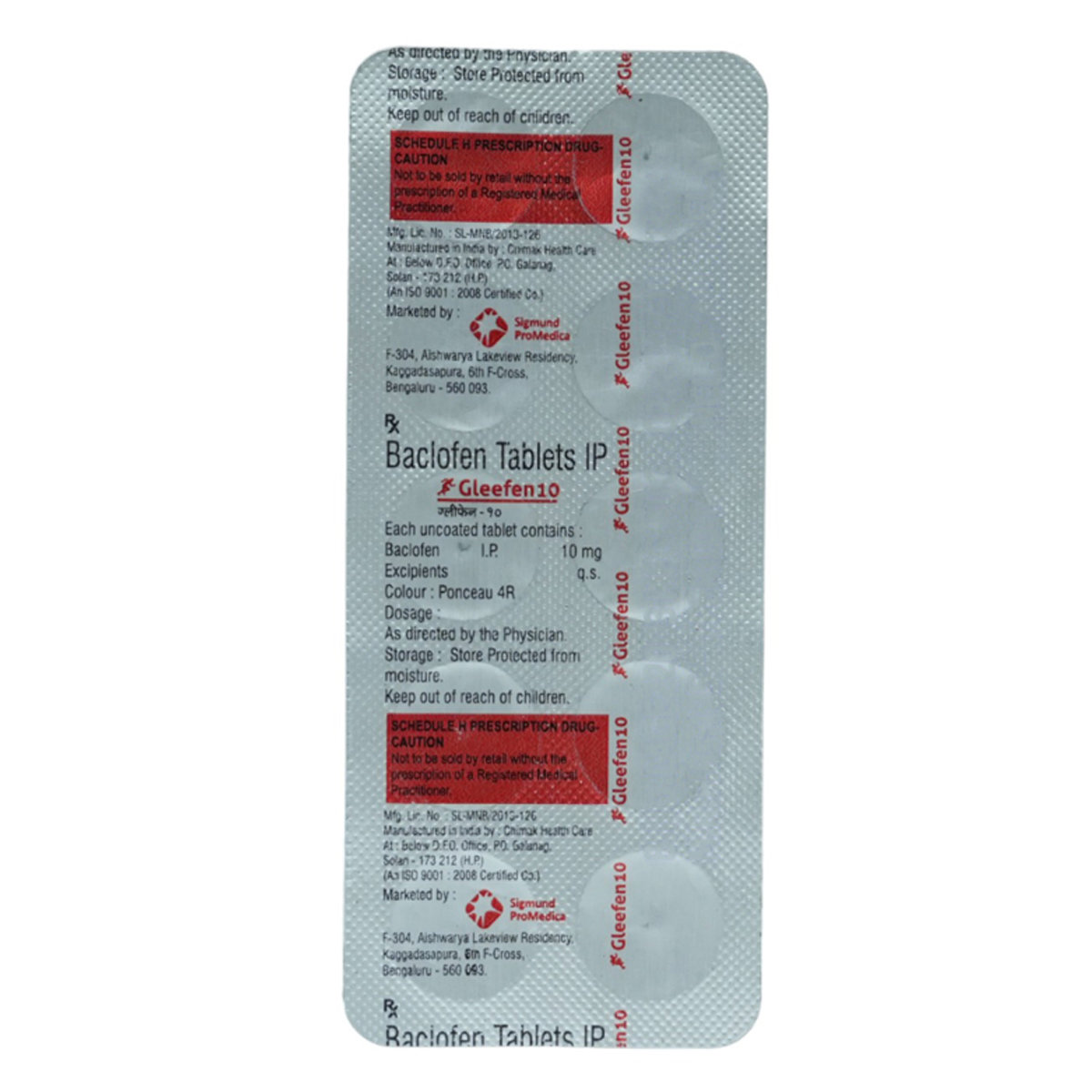
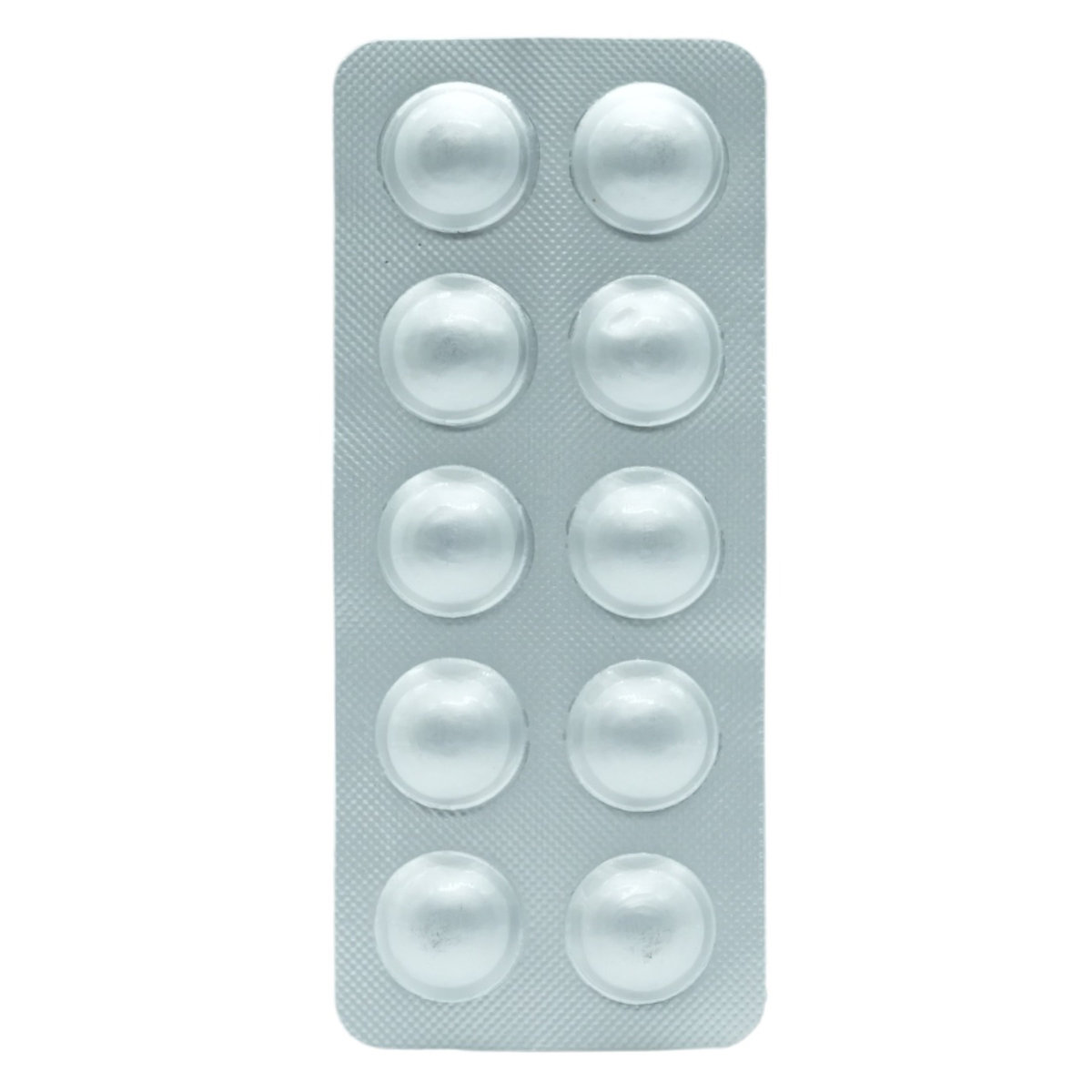



MRP ₹117
(Inclusive of all Taxes)
₹17.6 Cashback (15%)
Provide Delivery Location
Online payment accepted
 Prescription drug
Prescription drugWhats That
Composition :
Manufacturer/Marketer :
Consume Type :
Expires on or after :
Return Policy :
NPPA :
About Gleefen 10 mg Tablet
Gleefen 10 mg Tablet belongs to the group of medicines called 'muscle relaxants' used to reduce and relieve the muscle spasms (excessive tension in the muscles) occurring in various illnesses. Muscle spasm is the sudden involuntary contractions of the muscle, which can be painful and uncomfortable. When the nerve impulses that control the muscle movements are damaged or interrupted, it could lead to muscle spasms.
Gleefen 10 mg Tablet works by inhibiting the reflexes at the spinal level and helps in relieving pain and improves muscle movements. Gleefen 10 mg Tablet works on the spinal cord and brain, thereby helps in maintaining muscle strength and relieves muscle spasms or stiffness. Thus Gleefen 10 mg Tablet reduces muscle spasm in the conditions of multiple sclerosis (a disorder which affects the brain and spinal cord), cerebrovascular accidents (damage to the brain due to lack of blood supply), cerebral palsy (a disorder of movement, posture and muscle tone), spinal cord diseases and other nervous system disorders.
Take Gleefen 10 mg Tablet with food. You are advised to take Gleefen 10 mg Tablet for as long as your doctor has prescribed it for you, depending on your medical condition. In some cases, you may experience certain common side-effects such as sleepiness, drowsiness, nausea, headache, weakness, and dry mouth. Most of these side-effects do not require medical attention and will resolve gradually over time. However, you are suggested to talk to your doctor if you experience these side-effects persistently.
Do not discontinue Gleefen 10 mg Tablet suddenly as it could lead to unpleasant side-effects such as rigidity, increased heart rate, changes in mood, fever, mental disorders, confusion, hallucinations, and fits (seizures). Consult your doctor before taking Gleefen 10 mg Tablet if you are pregnant or breastfeeding. Gleefen 10 mg Tablet is not recommended for children below 4 years of age and those who weigh below 33kgs. Inform your doctor about all the current medicines you are taking and about your health condition to rule out any unpleasant side-effects. Please speak to your doctor immediately if you experience mood swings, depression, or if you have any suicidal thoughts.
Uses of Gleefen 10 mg Tablet
Directions for Use
Key Benefits
Gleefen 10 mg Tablet belongs to the group of medicines called muscle relaxants used to reduce and relieve the muscle spasms (excessive tension in the muscles) occurring in various illnesses such as multiple sclerosis (a disorder which affects the brain and spinal cord), cerebrovascular accidents (damage to the brain due to lack of blood supply), cerebral palsy (a disorder of movement, posture and muscle tone), spinal cord diseases and other nervous system disorders. Gleefen 10 mg Tablet works by inhibiting the reflexes at the spinal level and helps in relieving pain and improves muscle movements. Gleefen 10 mg Tablet is particularly effective for relieving involuntary muscle spasms in the ankle, hip, and knee. Gleefen 10 mg Tablet also helps in restoring muscle function; however, Gleefen 10 mg Tablet is not effective for muscle spasms caused by stroke, Parkinson’s disease, or rheumatoid arthritis. Gleefen 10 mg Tablet works on the centres of the spinal cord and brain, thereby helps in maintaining muscle strength and relieving muscle spasms or stiffness. Gleefen 10 mg Tablet is used off-label to treat hiccups or Tourette’s syndrome (a nervous problem which causes people to make uncontrollable sudden movements or sounds).
Storage
- Inform your doctor about the nausea and discuss possible alternatives to the medication or adjustments to the dosage.
- Divide your daily food intake into smaller, more frequent meals to reduce nausea.
- Opt for bland, easily digestible foods like crackers, toast, plain rice, bananas, and applesauce.
- Avoid certain foods that can trigger nausea, such as fatty, greasy, spicy, and smelly foods.
- Drink plenty of fluids, such as water, clear broth, or electrolyte-rich beverages like coconut water or sports drinks.
- Use ginger (tea, ale, or candies) to help relieve nausea.
- Get adequate rest and also avoid strenuous activities that can worsen nausea.
- Talk to your doctor about taking anti-nausea medication if your nausea is severe.
- Record when your nausea occurs, what triggers it, and what provides relief to help you identify patterns and manage your symptoms more effectively.
- Do pelvic floor exercises (Kegel exercises) to gain more control over urinary sphincters (muscles used to control flow of urine out of the bladder).
- Drink fluids only at certain times to control when you will urinate.
- If you feel frequent urge to urinate or have problems starting to urinate or if your urine stream is weak or starts and stops, or feel pain in your genitals, lower abdomen or lower back, consult your doctor.
- Avoid driving or operating machinery or activities that require high focus until you know how the medication affects you.
- Maintain a fixed sleeping schedule, create a relaxing bedtime routine and ensure your sleeping space is comfortable to maximize your sleep quality.
- Limit alcohol and caffeine as these may worsen drowsiness and disturb sleep patterns.
- Drink plenty of water as it helps with alertness and keeps you hydrated and for overall well-being.
- Moderate physical activity can improve energy levels, but avoid intense workouts right before bedtime.
- Get enough sleep. Maintain a regular sleep cycle.
- Eat a healthy diet and exercise regularly.
- Manage stress with yoga or meditation.
- Limit alcohol and caffeine.
- Avoid driving or operating machinery unless you are alert.
- Hydrate your body: Drink enough water to prevent dehydration and headaches.
- Calm Your Mind: Deep breathing and meditation can help you relax and relieve stress.
- Rest and Recharge: Sleep for 7-8 hours to reduce headache triggers.
- Take rest: lie down in a quiet, dark environment.
- Cold or warm compresses can help reduce tension.
- Stay Upright: Maintain good posture to keep symptoms from getting worse.
- To treat headaches naturally, try acupuncture or massage therapy.
- Over-the-counter pain relievers include acetaminophen and ibuprofen.
- Prescription Assistance: Speak with your doctor about more substantial drug alternatives.
- Severe Headaches: Seek emergency medical assistance for sudden, severe headaches.
- Frequent Headaches: If you get reoccurring headaches, consult your doctor.
- Headaches with Symptoms: Seek medical attention if your headaches include fever, disorientation, or weakness.
Drug Warnings
Do not take Gleefen 10 mg Tablet if you are allergic to any of its contents or if you ever had a stomach ulcer. Talk to your doctor before taking Gleefen 10 mg Tablet if you have kidney or liver problems, mental disorders, breathing difficulty or lung disease, diabetes, difficulty in urination, high blood pressure, Parkinson’s disease, or if you ever had a stroke. Consult your doctor before taking Gleefen 10 mg Tablet if you are pregnant or breastfeeding. Gleefen 10 mg Tablet is not recommended for children below four years of age and those who weigh below 33 kg.
Drug-Drug Interactions
Drug-Drug Interactions
Login/Sign Up
Co-administration of Gleefen 10 mg Tablet can enhance the sedative effects of Oxycodone on the central nervous system and can lead to serious side effects such as respiratory distress (a condition in which fluid builds up in the lungs).
How to manage the interaction:
Although there is a possible interaction between Oxycodone and Gleefen 10 mg Tablet, you can take these medicines together if prescribed by a doctor. Do not stop using any medications without first talking to your doctor.
Co-administration of Gleefen 10 mg Tablet can enhance the sedative effects of Remifentanil on the central nervous system which can lead to serious side effects such as respiratory distress (a condition in which fluid builds up in the lungs).
How to manage the interaction:
Co-administration of Gleefen 10 mg Tablet with Remifentanil can possibly result in an interaction, but it can be taken if a doctor has advised it. They can recommend other options that won't cause any problems. If you notice any symptoms like feeling tired, dizzy, or having trouble focusing, make sure to contact a doctor right away. Do not stop using any medications without talking to a doctor.
Co-administration of fentanyl and Gleefen 10 mg Tablet can increase sedation and may lead to respiratory distress (a condition in which fluid builds up in the lungs).
How to manage the interaction:
Although taking fentanyl and Gleefen 10 mg Tablet together can result in an interaction, they can be taken if prescribed by a doctor. However, if you experience dizziness, drowsiness, difficulty concentrating, and impairment in judgment, contact your doctor immediately. Do not stop using any medications without talking to your doctor.
Co-administration of Gleefen 10 mg Tablet with Esketamine may increase the risk or severity of adverse effects such as respiratory distress (a condition in which fluid builds up in the lungs).
How to manage the interaction:
Although there is an interaction, Gleefen 10 mg Tablet can be used with Esketamine if prescribed by the doctor. Consult a doctor if you experience drowsiness, confusion, difficulty concentrating, and impairment in thinking, judgment, and reaction speed. Do not stop any medication without doctor's consultation.
Co-administration of Tapentadol together with Gleefen 10 mg Tablet can increase the risk or severity of side effects like decreased breathing rate, irregular heart rhythms, or problems with movement and memory.
How to manage the interaction:
Taking Gleefen 10 mg Tablet with Tapentadol can result in an interaction, it can be taken if a doctor has advised it. Contact a doctor immediately if you experience signs such as drowsiness, lightheadedness, palpitations, confusion, severe weakness, or difficulty breathing. Do not discontinue any medications without consulting a doctor.
Co-administration of Gleefen 10 mg Tablet with Hydromorphone may increase the central nervous system and can lead to serious side effects including respiratory distress (a condition in which fluid builds up in the lungs).
How to manage the interaction:
Although there is an interaction, Gleefen 10 mg Tablet can be used with Hydromorphone if prescribed by the doctor. Inform the prescriber if you are taking these two medicines, the doctor may prescribe alternate medicines or a dose adjustment, or more frequent monitoring to safely use both medications. Do not discontinue any medications without consulting a doctor.
Co-administration of Gleefen 10 mg Tablet with Butorphanol can increase the risk of developing side effects.
How to manage the interaction:
Although there is a possible interaction between Gleefen 10 mg Tablet and Butorphanol, you can take these medicines together if prescribed by your doctor. If you notice any symptoms like dizziness, shortness of breath, palpitations, or chest discomfort, consult a doctor immediately. Do not stop using any medications without a doctor's advice.
Co-administration of Gleefen 10 mg Tablet can enhance the effects of Nalbuphine, which depresses the central nervous system and can lead to serious side effects such as respiratory distress (a condition in which fluid builds up in the lungs).
How to manage the interaction:
Although there is a possible interaction between Gleefen 10 mg Tablet and Nalbuphine, you can take these medicines together if prescribed by a doctor. If you notice any symptoms like feeling tired, dizzy, or having trouble focusing, make sure to contact a doctor right away. Do not stop using any medications without talking to a doctor.
Co-administration of Gleefen 10 mg Tablet with Codeine can increase the risk of side effects.
How to manage the interaction:
Although there is an interaction, Gleefen 10 mg Tablet can be used with Codeine if prescribed by the doctor. These medications may cause dizziness, drowsiness, shortness of breath, or palpitations, consult a doctor immediately. Do not stop any medication without a doctor's advice.
Co-administration of Gleefen 10 mg Tablet with Hydrocodone may increase sedation and respiratory distress (fluid collects in the air sacs of the lungs)
How to manage the interaction:
Although there is an interaction, Gleefen 10 mg Tablet can be used with Hydrocodone if prescribed by the doctor. Co-administration of these medications may cause dizziness, drowsiness, difficulty in concentrating, and impaired judgment. Do not stop any medication without doctor's consultation.
Drug-Food Interactions
Drug-Food Interactions
Login/Sign Up
Diet & Lifestyle Advise
- Exercising regularly helps in muscle stretching so that they are less likely to spasm, tear, and sprain. Mild exercises such as jogging and walking are helpful for muscle stretching.
- Massages can also be helpful.
- Avoid extremely cold and hot temperatures.
- Avoid wearing tight-fitting clothes, instead, wear loose garments.
- Rest well, get plenty of sleep.
- To avoid developing pressure sores, change your position at least every two hours.
- Hot or cold therapy can be helpful in treating muscle spasms. Apply an ice-pack or hot-pack on the muscle for 15-20minutes.
- Stay hydrated, drink plenty of water.
Side Effects of Gleefen 10 mg Tablet
- Sleepiness
- Drowsiness
- Nausea
- Headache
- Weakness
- Dry mouth
Habit Forming
Therapeutic Class
All Substitutes & Brand Comparisons
RX
Riclofen 10 mg Tablet 10's
Samarth Life Sciences Pvt Ltd
₹76
(₹6.69 per unit)
36% CHEAPERRX
Bacrite 10mg Tablet 10's
Health N U Therapeutics Pvt Ltd
₹80.5
(₹7.25 per unit)
31% CHEAPERRX
Nerfspas 10 mg Tablet 10's
Gladstone Pharma India Pvt Ltd
₹117
(₹10.53 per unit)
Product Substitutes
Author Details
We provide you with authentic, trustworthy and relevant information
Drug-Diseases Interactions
Drug-Diseases Interactions
Login/Sign Up
The kidney is the main organ used to remove Gleefen 10 mg Tablet. Gleefen 10 mg Tablet side effects may be more likely to occur in patients with poor renal function due to decreased medication clearance. In these patients, Gleefen 10 mg Tablet therapy should be used with caution. It could be required to modify the dosage.
How to manage the interaction:
Therapy with Gleefen 10 mg Tablet should be administered cautiously in such patients. Dosage adjustments may be necessary.
Patients with a history of autonomic dysreflexia should be treated with intrathecal Gleefen 10 mg Tablet with caution because the drug's rapid withdrawal or the presence of nociceptive stimuli can cause an episode of dysreflexia.
How to manage the interaction:
Gleefen 10 mg Tablet should be administered cautiously in patients with autonomic dysreflexia.
Both during therapy and after an abrupt withdrawal from the drug, Gleefen 10 mg Tablet may cause or aggravate psychotic symptoms. Patients having a history of psychiatric illnesses should be treated with Gleefen 10 mg Tablet with caution.
How to manage the interaction:
Gleefen 10 mg Tablet may precipitate or exacerbate psychotic symptoms, both during therapy and following abrupt withdrawal of the drug. Therapy with Gleefen 10 mg Tablet should be administered cautiously in patients with a history of psychiatric disorders.
Gleefen 10 mg Tablet treatment for epilepsy has occasionally been associated with electroencephalographic (EEG) abnormalities and a decline in seizure control. Patients having a history of seizures should receive Gleefen 10 mg Tablet therapy with caution. Throughout treatment, clinical conditions and EEG should be monitored often.
How to manage the interaction:
Gleefen 10 mg Tablet may occasionally cause decrease in seizure control. Therapy with Gleefen 10 mg Tablet should be administered cautiously in patients with a history of seizures.
FAQs
Gleefen 10 mg Tablet works on the centres of the spinal cord and brain, thereby helps in maintaining muscle strength and relieves muscle spasms or stiffness.
Gleefen 10 mg Tablet causes sleepiness and drowsiness. So, drive only if you are alert and omit driving or operating machinery if you feel sleepy or drowsy.
Dry mouth could be a side-effect of Gleefen 10 mg Tablet . Limiting caffeine intake, avoiding smoking and mouthwashes containing alcohol, drinking water regularly, and chewing sugar-free gum/candy might help in stimulating saliva and thereby prevents drying of the mouth.
Do not discontinue Gleefen 10 mg Tablet without consulting your doctor. Discontinuing Gleefen 10 mg Tablet suddenly might cause muscle rigidity, increased heart rate, changes in mood, fever, mental disorders, confusion, hallucinations, and fits (seizures). Talk to your doctor if you feel any difficulty while taking Gleefen 10 mg Tablet ; your doctor will reduce the dose gradually.
Do not use Gleefen 10 mg Tablet at a time when muscle tone is required for safe balance and movement during certain activities. In some conditions, it may be dangerous for you to have low or reduced muscle tone. Please do not drink alcohol with Gleefen 10 mg Tablet as it can cause side effects. Avoid driving or performing hazardous tasks until you know how Gleefen 10 mg Tablet will affect you and your reactions could be impaired.
Drug-Drug Interactions Checker List
- HYDROCODONE
- ACETAMINOPHEN
- IBUPROFEN
- MORPHINE
- FENTANYL
- TRAMADOL
- NALOXONE
- TIZANIDINE
- LITHIUM
- AMITRIPTYLINE
- DILTIAZEM
- LEVODOPA
- PROMETHAZINE
- CARBAMAZEPINE
Special Advise
- Your doctor may advise you to undergo regular blood tests to monitor liver function.
- Inform your doctor that you are taking Gleefen 10 mg Tablet if you are due to undergo any surgery which requires a general anaesthetic.
- Please talk to your doctor immediately if you experience mood swings, depression, or if you have any suicidal thoughts.
Disease/Condition Glossary
Muscle spasm: It is the sudden involuntary contractions of the muscle, which can be painful and uncomfortable. When the nerve impulses that control the muscle movements are damaged or interrupted, it could lead to muscle spasms. Symptoms include muscle tightness, joint stiffness, unusual posture, difficulty in moving, pain in affected muscles, and joints. Fatigue (weakness), stress, extreme heat or cold, infection, and tight clothing can trigger muscle spasms. Muscle relaxants and exercise can treat muscle spasms. Muscle relaxants sedate the muscle and help in inhibiting painful contractions. Exercise helps in muscle stretching so that they are less likely to spasm, tear, and sprain.

Have a query?
Buy best C.n.s Drugs products by
Intas Pharmaceuticals Ltd
Sun Pharmaceutical Industries Ltd
Torrent Pharmaceuticals Ltd
Alkem Laboratories Ltd
Abbott India Ltd
Cipla Ltd
Alteus Biogenics Pvt Ltd
Micro Labs Ltd
Lupin Ltd
Ipca Laboratories Ltd
D D Pharmaceuticals Pvt Ltd
Icon Life Sciences
Mankind Pharma Pvt Ltd
Tripada Healthcare Pvt Ltd
Arinna Lifesciences Ltd
Linux Laboratories Pvt Ltd
East West Pharma India Pvt Ltd
La Renon Healthcare Pvt Ltd
Talent India Pvt Ltd
Tas Med India Pvt Ltd
Zydus Healthcare Ltd
Cnx Health Care Pvt Ltd
Eris Life Sciences Ltd
Leeford Healthcare Ltd
Emcure Pharmaceuticals Ltd
Macleods Pharmaceuticals Ltd
Sigmund Promedica
Aristo Pharmaceuticals Pvt Ltd
Dr Reddy's Laboratories Ltd
Troikaa Pharmaceuticals Ltd
Consern Pharma Ltd
Zydus Cadila
Shine Pharmaceuticals Ltd
Wockhardt Ltd
Ardent Life Sciences Pvt Ltd
Crescent Formulations Pvt Ltd
Theo Pharma Pvt Ltd
Reliance Formulation Pvt Ltd
Ikon Pharmaceuticals Pvt Ltd
Propel Healthcare
Neon Laboratories Ltd
Jagsam Pharma
Msn Laboratories Pvt Ltd
Morepen Laboratories Ltd
Pulse Pharmaceuticals
Sanofi India Ltd
Med Manor Organics Pvt Ltd
Hetero Healthcare Pvt Ltd
Novartis India Ltd
Crescent Therapeutics Ltd
Elder Pharmaceuticals Ltd
Solvate Laboratories Pvt Ltd
Akumentis Healthcare Ltd
Mova Pharmaceutical Pvt Ltd
Psyco Remedies Ltd
Tripada Lifecare Pvt Ltd
Ajanta Pharma Ltd
Cyrus Remedies Pvt Ltd
Medishri Healthcare Pvt Ltd
Cadila Healthcare Ltd
Glenmark Pharmaceuticals Ltd
Matteo Health Care Pvt Ltd
Hbc Life Sciences Pvt Ltd
Lyf Healthcare
Matias Healthcare Pvt Ltd
Mesmer Pharmaceuticals
Alembic Pharmaceuticals Ltd
Capital Pharma
Crescent Pharmaceuticals
Medopharm Pvt Ltd
Alniche Life Sciences Pvt Ltd
Kivi Labs Ltd
Talin Remedies Pvt Ltd
USV Pvt Ltd
Quince Lifesciences Pvt Ltd
Solis Pharmaceuticals
Infivis Life Care
Zuventus Healthcare Ltd
Cadila Pharmaceuticals Ltd
Pfizer Ltd
Wallace Pharmaceuticals Pvt Ltd
A N Pharmacia Laboratories Pvt Ltd
Blue Cross Laboratories Pvt Ltd
Jenburkt Pharmaceuticals Ltd
Lia Life Sciences Pvt Ltd
Mano Pharma
Medley Pharmaceuticals Ltd
Primus Remedies Pvt Ltd
FDC Ltd
Maneesh Pharmaceuticals Ltd
Apex Laboratories Pvt Ltd
Gagnant Healthcare Pvt Ltd
Ozone Pharmaceuticals Ltd
RPG Life Sciences Ltd
Strides Shasun Ltd
Unichem International
GlaxoSmithKline Pharmaceuticals Ltd
Kuresys Labs Pvt Ltd
LA Pharma
Trion Pharma India Llp
Alcohol
Safe if prescribed
Avoid consumption of alcohol while taking Gleefen 10 mg Tablet as it may increase drowsiness.
Pregnancy
Consult your doctor
Avoid taking Gleefen 10 mg Tablet if you are pregnant unless prescribed by a doctor. Please consult your doctor if you have any concerns regarding this; your doctor will prescribe only if the benefits outweigh the risks.
Breast Feeding
Consult your doctor
Consult your doctor before taking Gleefen 10 mg Tablet ; your doctor will decide whether Gleefen 10 mg Tablet can be taken by breastfeeding mothers or not.
Driving
Safe if prescribed
Gleefen 10 mg Tablet causes sleepiness and drowsiness. Do not drive or operate machinery unless you are alert.
Liver
Consult your doctor
Dose adjustment may be needed in patients with liver impairment. Please consult your doctor if you have a liver impairment or any concerns regarding this.
Kidney
Consult your doctor
Dose adjustment may be needed in patients with kidney impairment. Please consult your doctor if you have kidney impairment or any concerns regarding this.
Children
Safe if prescribed
Gleefen 10 mg Tablet should not be given to children under 33 kgs of body weight. Gleefen 10 mg Tablet should be used in children above 4 years if prescribed by a doctor.



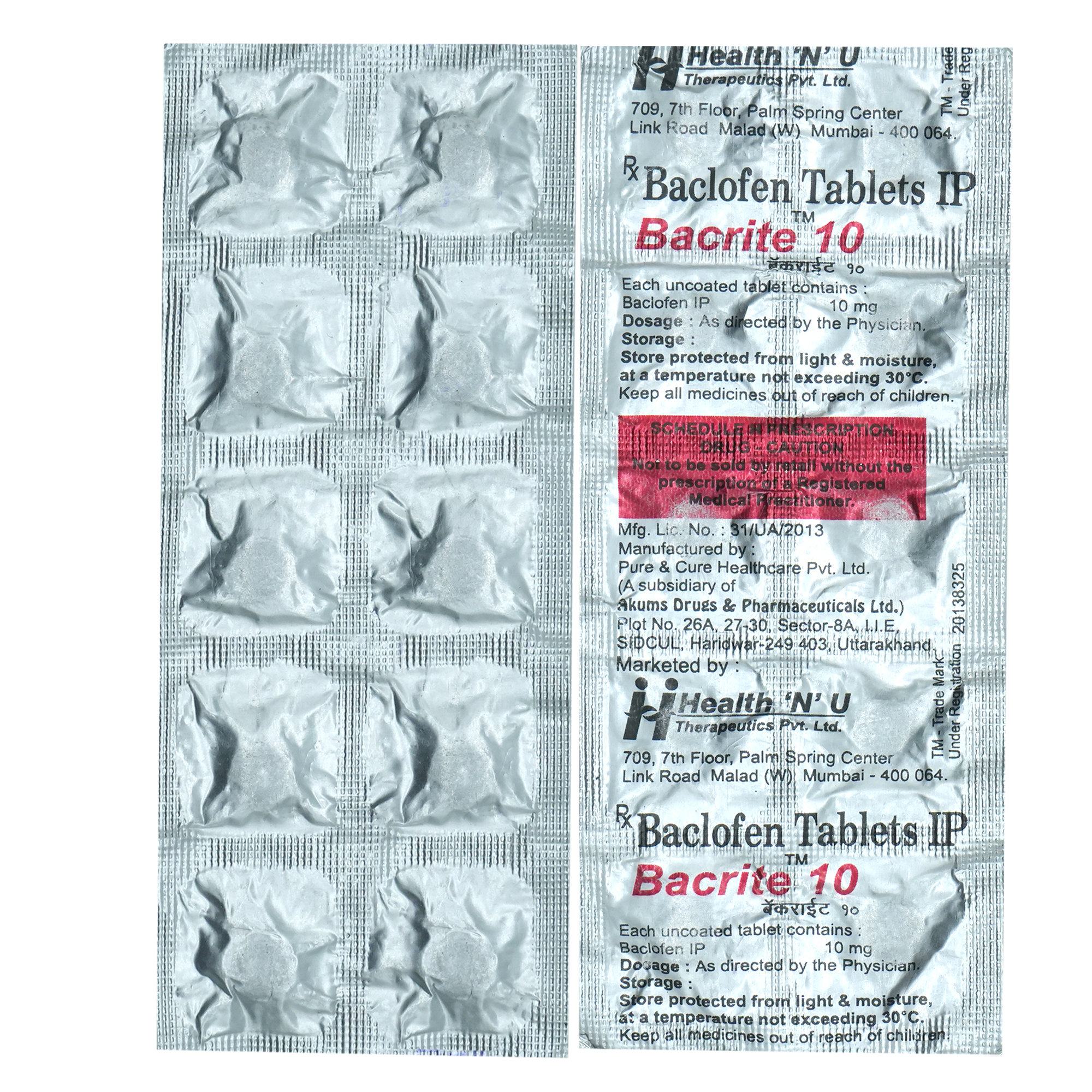

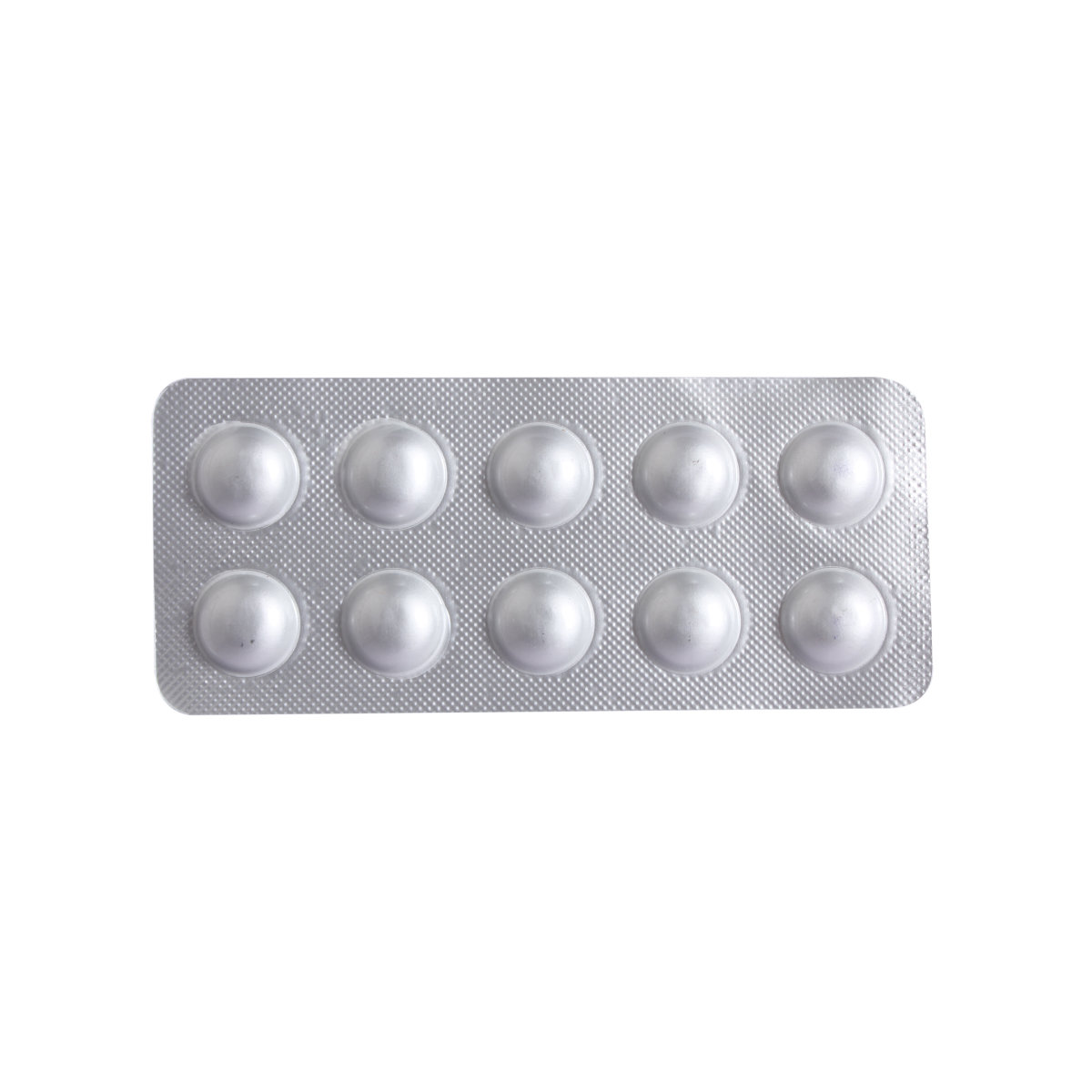
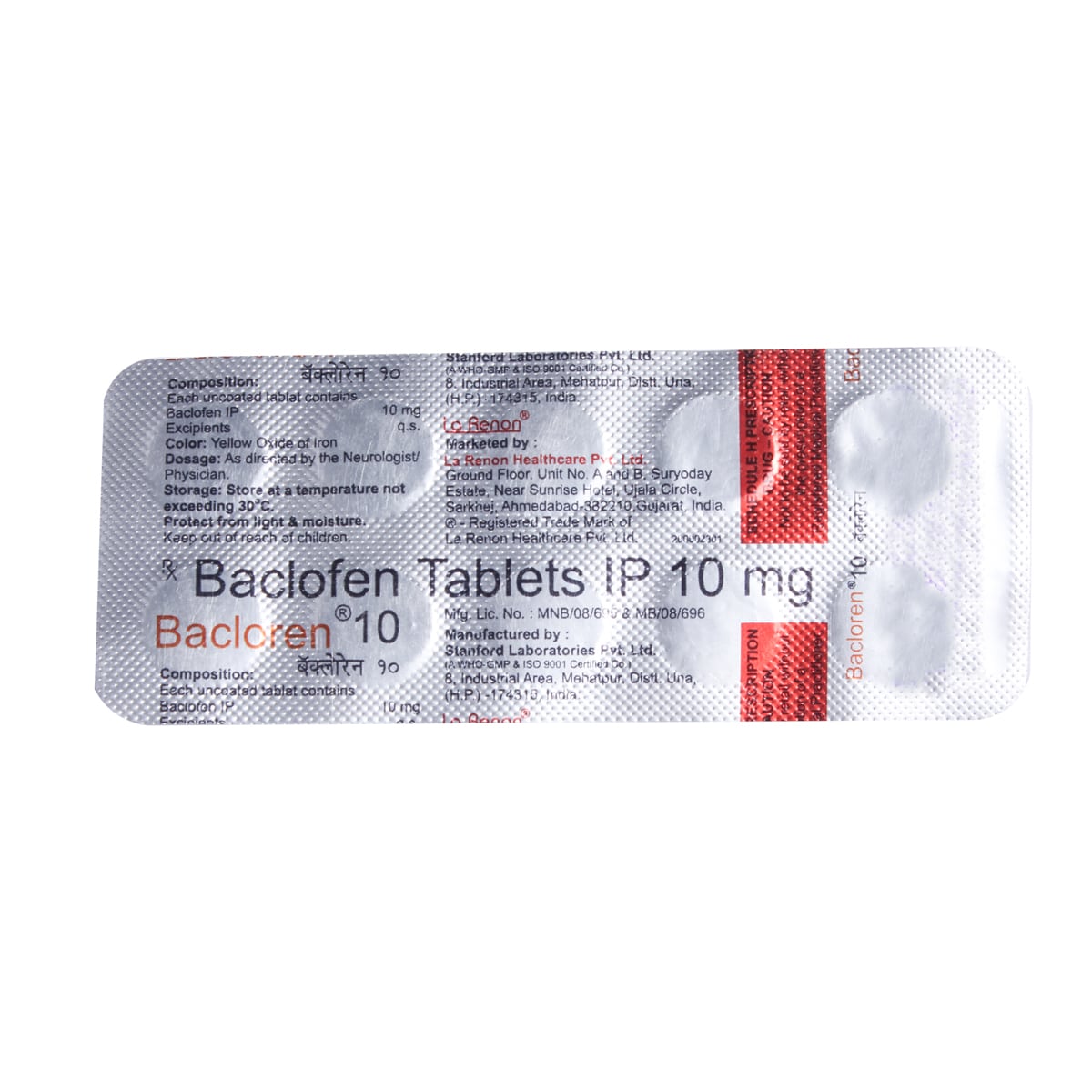
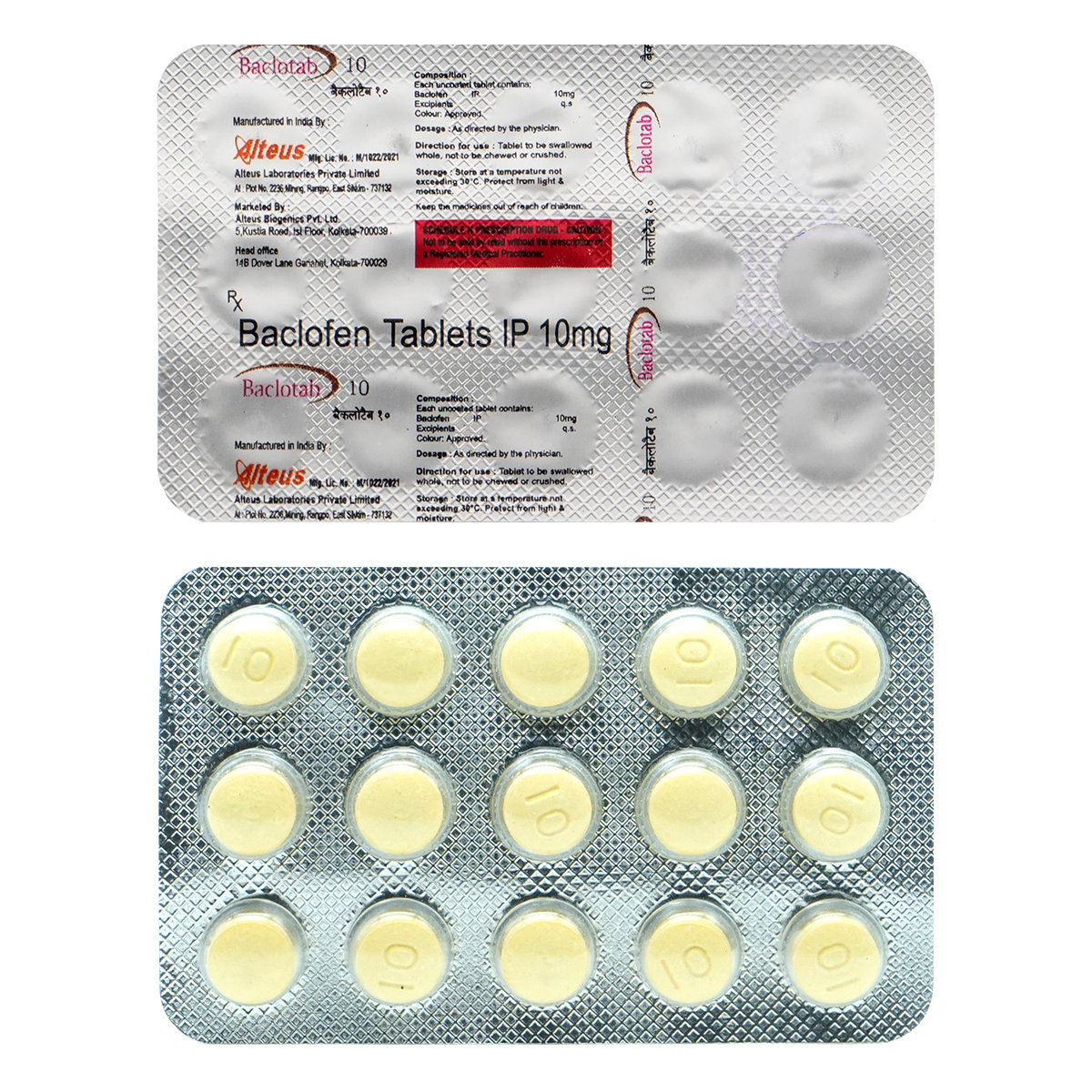

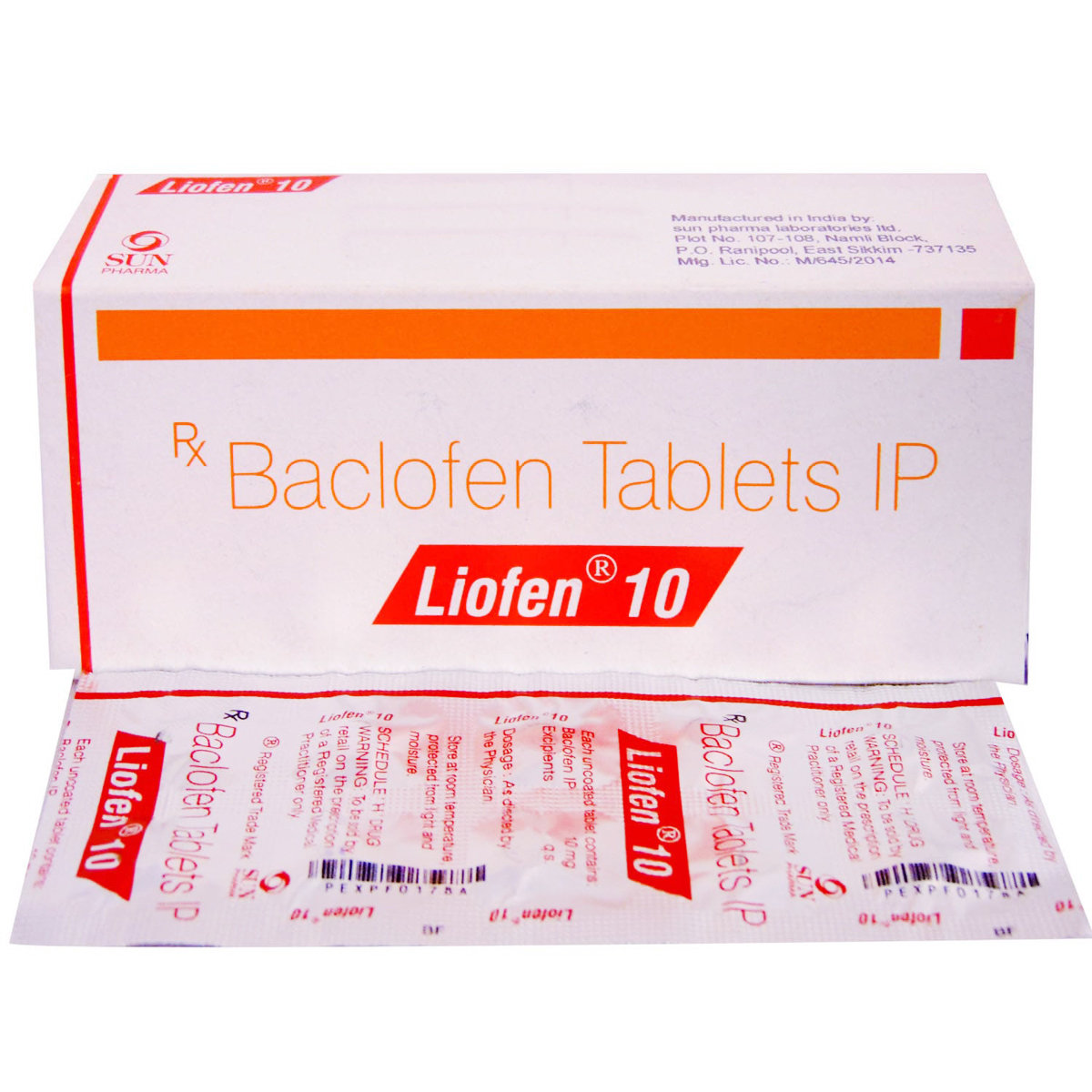
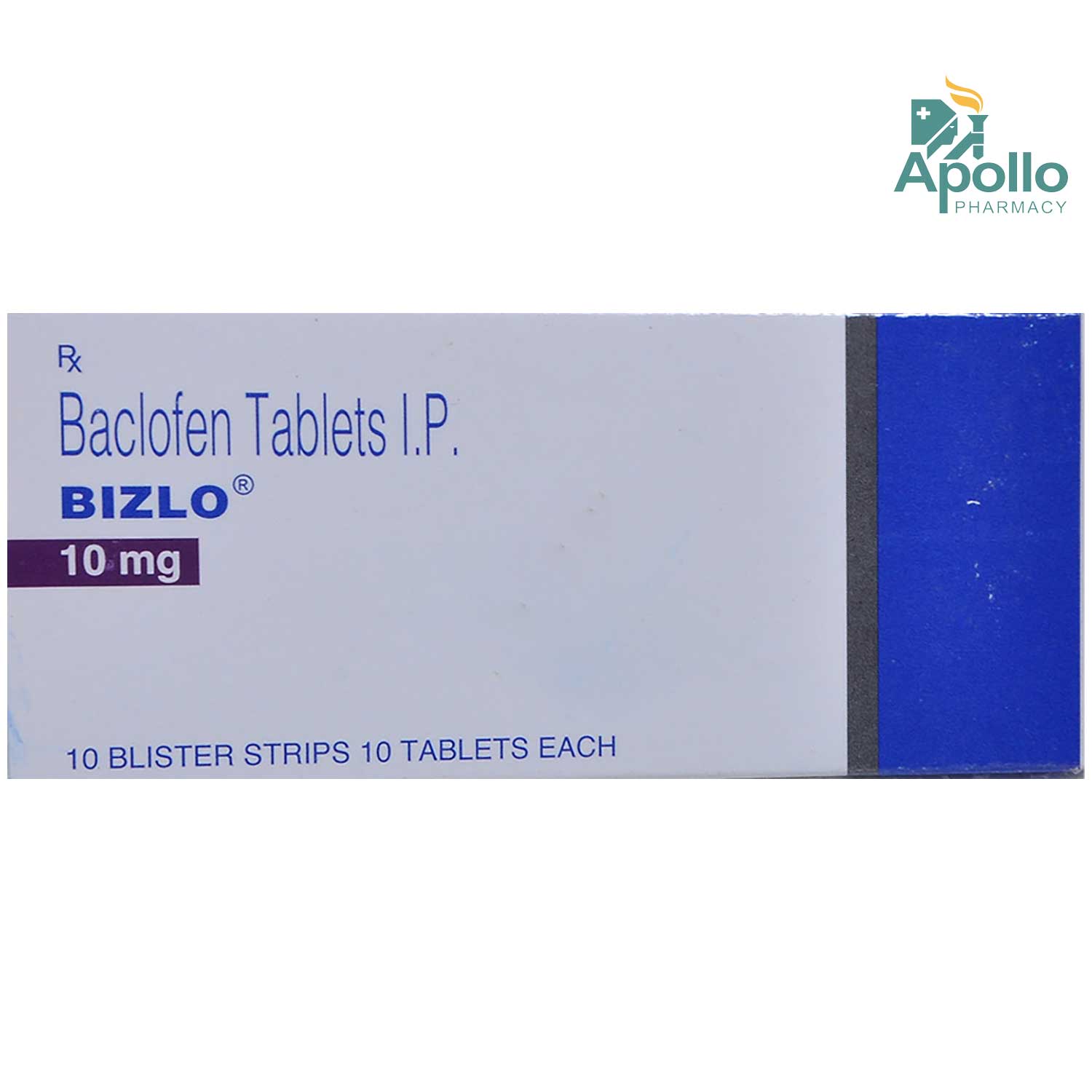
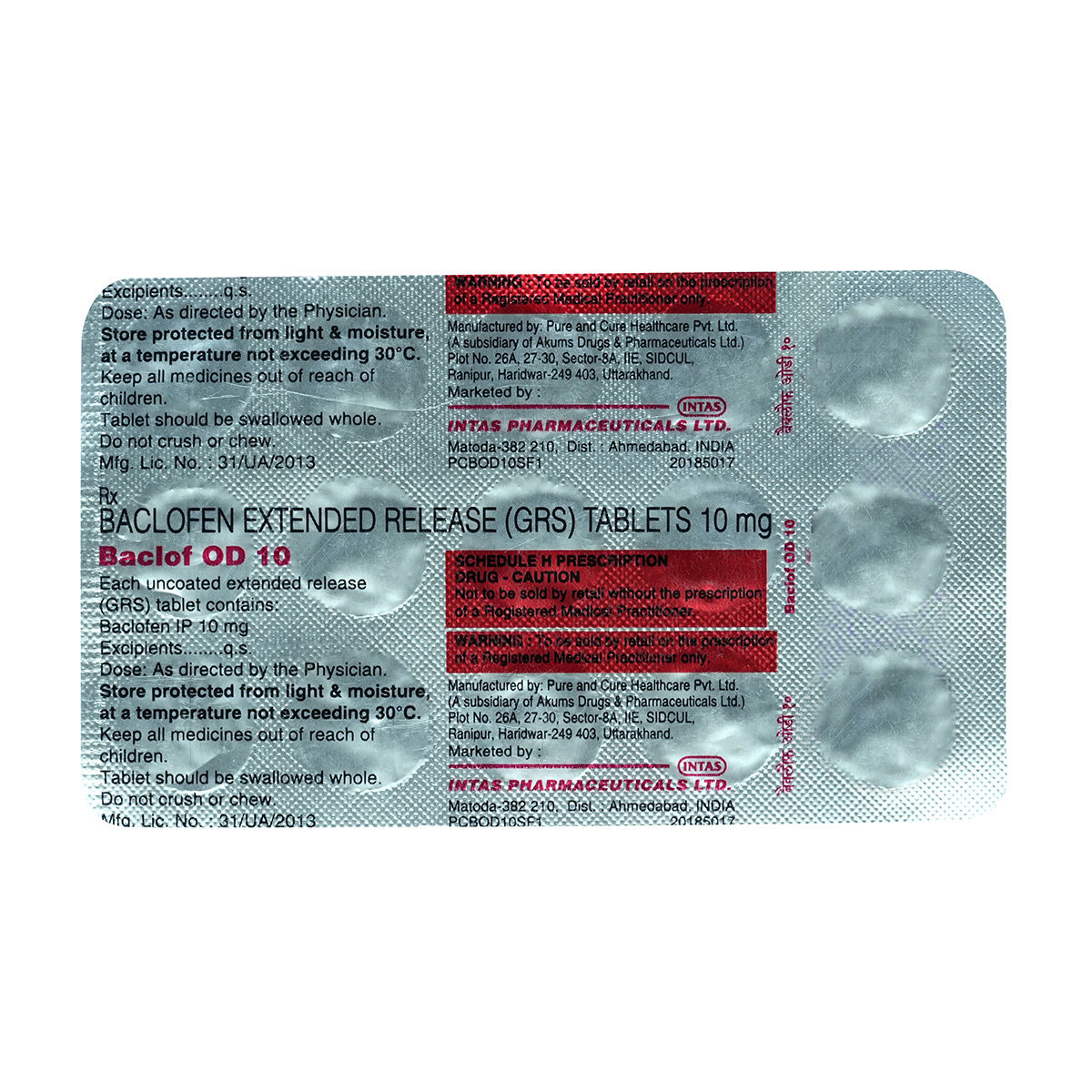
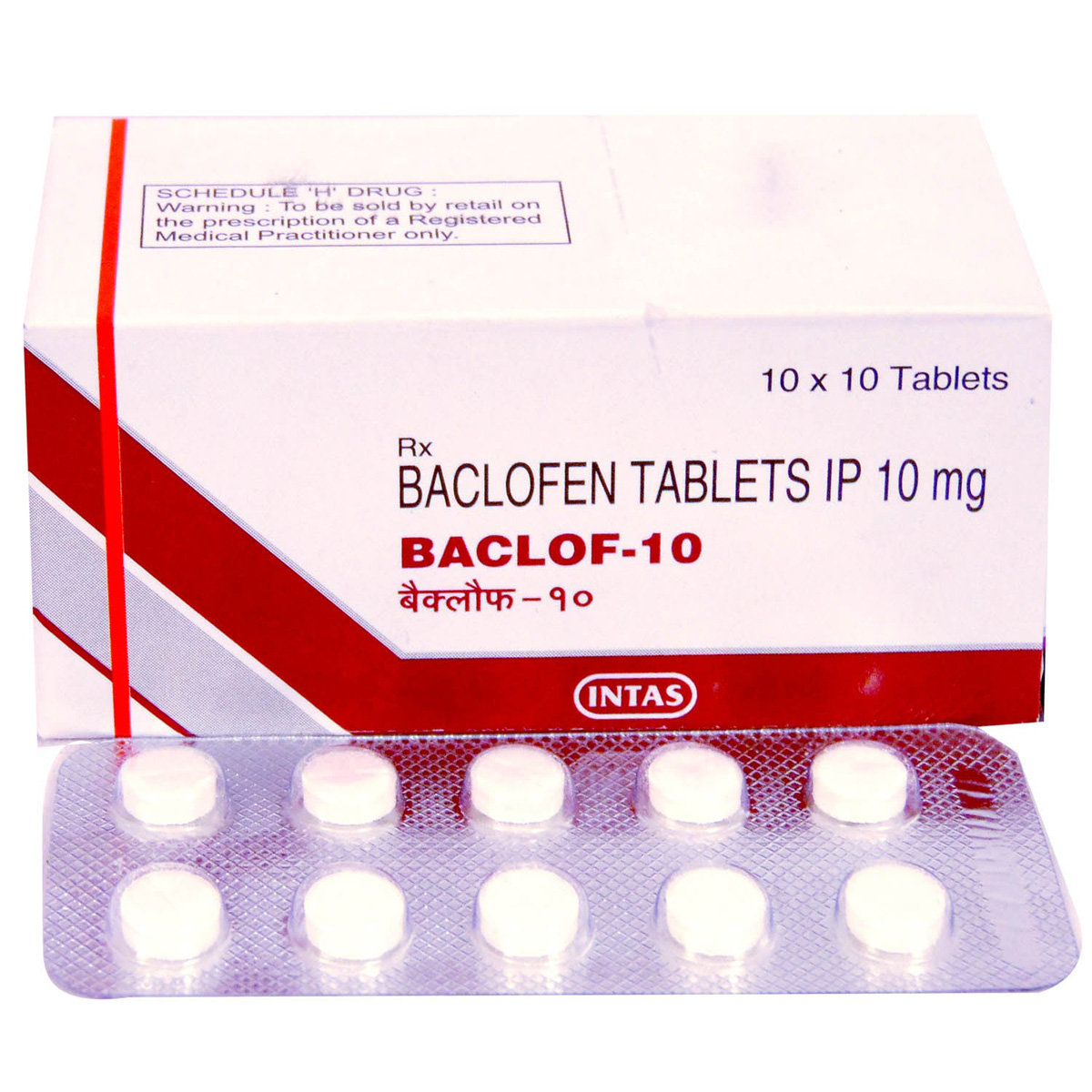
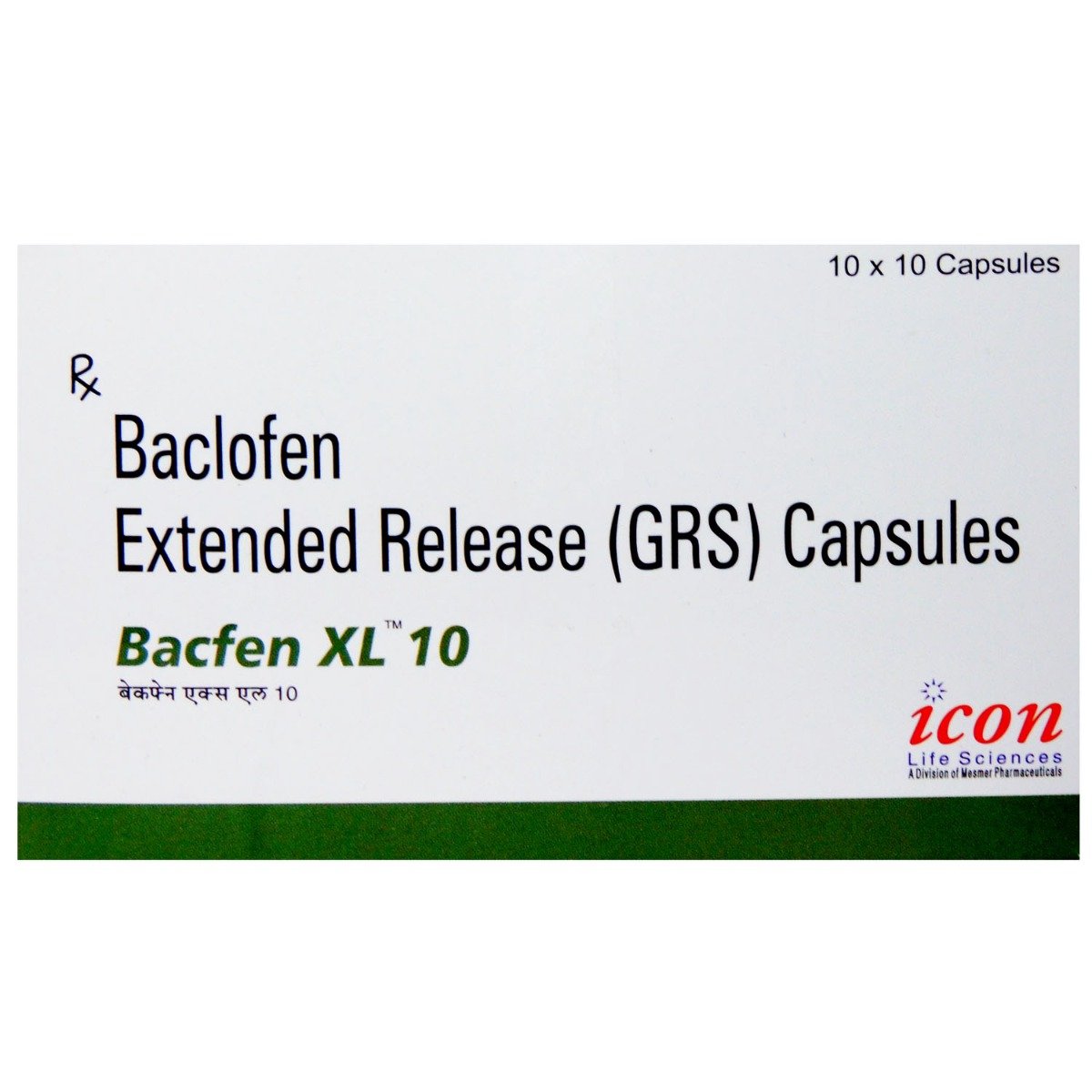

_0.jpg?tr=q-85)

